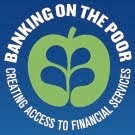Almost immediately following Opportunity Fund’s “Taste of Microfinance” event that I wrote about in my last post, I traveled to Philadelphia to attend the Lend for America Summit, a conference for college students who have or are in the process of opening their own microfinance organizations to serve their local communities. Stockton Impact Corps was there and Banking on the Poor was a sponsor.
Kudos to Vanessa Carter and her team for putting on a fantastic conference for close to 200 college students from around the country. They assembled an outstanding cast of presenters who spoke and facilitated workshops on topics of great relevance to their work. People like the ever passionate and inspiring Galen Gondolfi from one of the leading anti-poverty micro-lenders in the country, Justine Petersen of St. Louis Missouri, who spoke on what it means to be “un-banked” in America and how student organizations can make a significant difference in the lives of their clients by helping them improve their credit scores and build their savings.
There were highly practical sessions on marketing and risk management provided by Leslie Hoffman of LEH Consulting, and a number of presentations on the importance of information systems and data needed to run an effective MFI. What impressed me was how intent the students were in absorbing the information and asking really astute questions. One of my take-aways from the conference is the observation that the students have much to learn to be effective in helping the low-income community with their financial issues. This is why in developing Stockton Impact Corps, we are focusing so much on training.
A second take-away came from a panel discussion regarding community development efforts in Philadelphia. One panelist, Bertha Sarmina, described how her organization, Finanta, was unable to find “qualified” borrowers to whom they could on-lend money available through the Small Business Administration. I asked whether this was because of stringent requirements of the SBA. She replied that the requirements were their own. She said the clients they serve need a great deal of mentoring to be “credit worthy.” It would cost Finanta about $2,500 per client to provide such support. I remembered this is exactly the same number Opportunity Fund came up with regarding their clients. So, my big take-away from the conference is that these student led organizations, given the right tools, are perfectly positioned to work with such lenders as Opportunity Fund and Finanta to ensure that low-income borrowers are able to make effective use of the credit extended them.
From Philadelphia I traveled to Ixtapa, Mexico for the annual Opportunity Collaboration un-conference. I’ll write more about that in my next post. For now suffice it to say it was a smorgasbord of serendipitous contacts with amazing people working to end global poverty.
